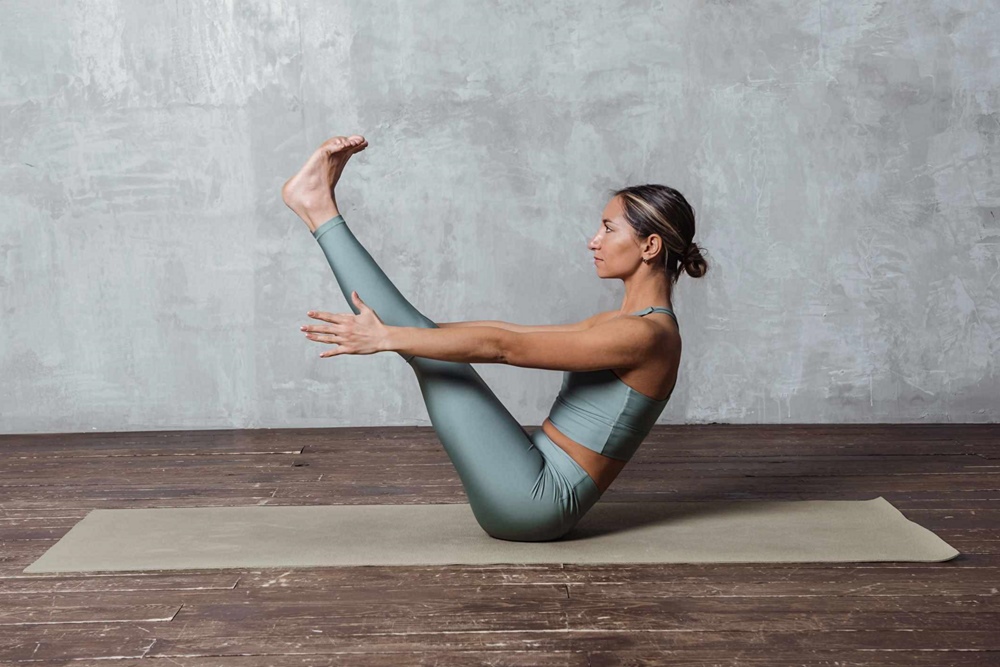Last Updated on: 18th December 2024, 12:29 pm
Pilates, developed by Joseph Pilates in the early 20th century, is a fitness system focused on core strength, flexibility, and mindful movement. Originally for rehabilitation, it now serves as a versatile exercise method for improving posture and balance through controlled exercises.
- Misconceptions: Pilates is often misunderstood as being exclusive or lacking intensity, but it is adaptable for all fitness levels.
- Versatility: Suitable for beginners and athletes, Pilates offers modifications to match various fitness needs.
- Well-being: It emphasizes precision and breath control, enhancing both mental focus and physical stamina.
Pilates is a comprehensive practice that strengthens the body and mind, suitable for rehabilitation, fitness enhancement, or stress relief.
The Core Principles of Pilates

Concentration and Mindfulness During Exercise
Pilates requires focus, ensuring each movement is performed with attention to form, enhancing physical awareness.
Control and Precision in Movement
Emphasizing control, Pilates teaches that precise movements yield better results, building strength and discipline.
Centering: Focusing on Core Strength
Centering strengthens core muscles, essential for balance, posture, and efficient movement.
Flow and Efficiency of Movement
Exercises are performed fluidly, promoting endurance and relaxation.
Breath Control and Its Importance
Breath control is integral, supporting movement execution and stress reduction.
These principles form the foundation of Pilates, offering a comprehensive fitness system that strengthens the body and calms the mind.
Health Benefits of Pilates

- Improved Flexibility and Range of Motion: Enhances flexibility and reduces injury risk.
- Enhanced Muscle Strength and Tone: Focuses on core muscles, improving posture and alignment.
- Better Posture and Alignment: Promotes awareness of body position, preventing aches and pains.
- Reduction in Back Pain and Other Chronic Ailments: Strengthens core, offering relief from back pain.
- Boost in Mental Health and Reduction in Stress Levels: Promotes mental clarity and calmness.
Pilates offers a holistic approach to health, influencing flexibility, muscle tone, posture, and mental well-being.
Pilates for Different Needs and Populations

- Pilates for Athletes: Enhances performance and reduces injury risk.
- Pilates for Rehabilitation: Aids recovery with controlled movements and core strengthening.
- Pilates for the Elderly: Improves mobility and reduces fall risk.
- Pilates During and After Pregnancy: Offers benefits for prenatal and postnatal care.
Pilates is adaptable for various needs, offering a path to improved well-being for all ages and fitness levels.
Getting Started with Pilates

Choosing the Right Pilates Class: Mat vs. Reformer Pilates
Select between Mat Pilates, which uses body weight, and Reformer Pilates, which uses a machine for resistance. Consider your goals and preferences.
What to Expect in Your First Pilates Session
Expect low-impact exercises focusing on core strength, posture, and flexibility, with modifications for different fitness levels.
Tips for Beginners: How to Prepare and What to Bring
Wear comfortable clothing, bring water, and arrive early. Approach with an open mind and patience.
Finding a Qualified Pilates Instructor
Look for certified instructors who provide personalized feedback and modifications.
Starting Pilates can improve your physical and mental well-being with the right class, preparation, and instructor.
Incorporating Pilates into Your Lifestyle

Developing a Consistent Pilates Routine
- Start Small: Begin with two sessions per week and gradually increase frequency.
- Build Muscle Memory: Consistent practice enhances the mind-body connection.
- Set Realistic Goals: Adjust your routine as your body adapts to the exercises.
Combining Pilates with Other Forms of Exercise
- Warm-Up or Cool-Down: Use Pilates to prepare for or wind down after high-impact activities.
- Create a Balanced Regimen: Pair Pilates with cardiovascular exercises or strength training.
- Enhance Overall Health: A well-rounded fitness regimen promotes vitality.
Making Pilates a Part of Your Holistic Approach to Health
- More Than a Workout: View Pilates as a component of a holistic health strategy.
- Practice Mindfulness: Incorporate principles of mindfulness and controlled movement into daily activities.
- Improve Life Quality: Use Pilates for stress management, improved concentration, and a harmonious lifestyle.
Pilates can be tailored to enhance fitness, aid recovery, or provide a meditative escape, becoming a way of life.
Bringing It All Together
Pilates offers a path to a balanced and healthier lifestyle through its core principles. It caters to diverse needs and promotes a holistic approach to health, guiding practitioners to a more resilient and fulfilled self.

